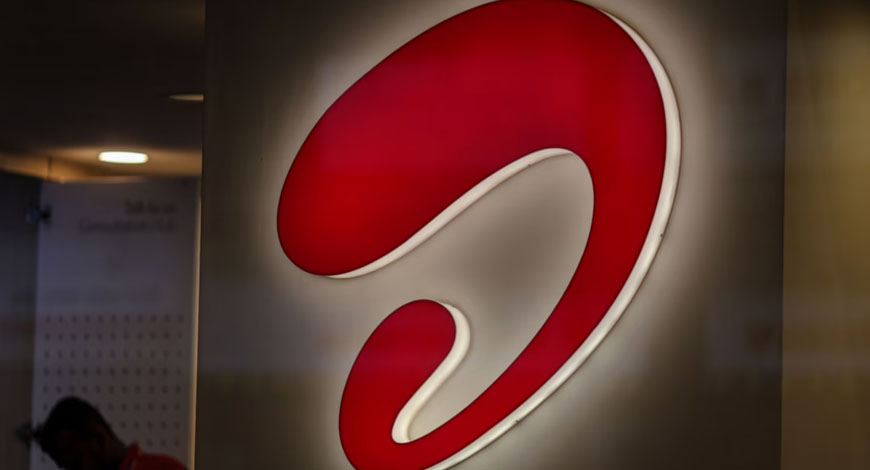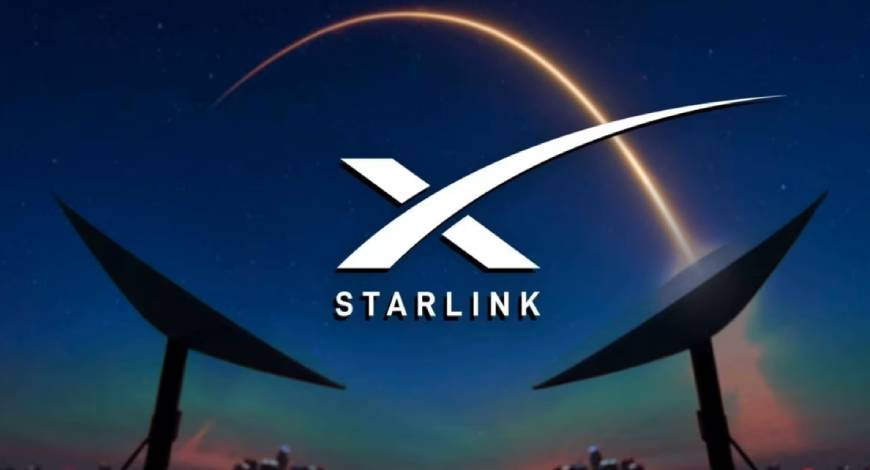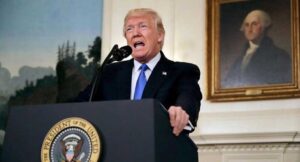President Donald Trump’s trade war and efforts to bring manufacturing back to US shores have put one of his predecessor’s signature achievements on the firing line: the Chips and Science Act.
Signed by Joe Biden in 2022, the bipartisan law is Washington’s $52 billion bid to revitalize the American semiconductor industry. The goal is to reduce US reliance on Asia for the tiny components that are the lifeblood of the modern economy, found in smartphones and missiles alike.
The Chips Act has spurred nearly $450 billion in commitments to build factories on US soil, amounting to almost $10 of private sector investment for every $1 spent by the government. Even so, Trump has complained that the program is a waste of taxpayer money, telling Congress that it’s a “horrible, horrible thing” and imploring Republican lawmakers, who control both chambers, to repeal the legislation.
He argues that tariffs function better than subsidies to encourage investment in the US, with the added bonus of generating federal revenue from the duties on imports into the country. Trump has signaled that he’ll impose new import levies on semiconductors as soon as April.
He credited the threat of tariffs for the decision of Taiwan Semiconductor Manufacturing Co., the world’s top manufacturer of artificial intelligence chips, to invest an additional $100 billion in US plants. TSMC says its US expansion is due to significant market demand.
What is the Chips Act?
The law is among the country’s biggest forays into industrial policy. It includes $39 billion in grants to incentivize semiconductor manufacturing and $11 billion for research and development. Companies can also access up to $75 billion in loans and loan guarantees, though the Commerce Department — which oversees the funding — has only used a small amount of that authority. Several major chipmakers opted not to tap that financing.
More than 85% of the grant funding, spread across 20 firms, was finalized prior to Trump reentering office. But only $4.3 billion actually went out the door under Biden. That’s because the awards are designed to be disbursed over time as companies hit negotiated project milestones, and factories take years to build.
The Chips Act also includes a lucrative 25% tax credit for manufacturing projects which, for most businesses, will constitute the largest federal incentive they access under the program. Grants, by comparison, typically cover 10% to 15% of project costs. Together, these policy tools aim to make it as cost-effective to build a factory in the US as in Asia, which has benefited from access to cheaper labor and economies of scale.
There’s no cap on the dollar amount firms can claim from the Chips Act’s tax credit. The Peterson Institute for International Economics estimated in June 2024 that this credit could cost the government over $85 billion in foregone revenue, more than three times the original projection of the Congressional Budget Office — a reflection of the huge amount of investment the law spurred.
Who are the main beneficiaries of the Chips Act?
Around three-quarters of the grant funding is slated to go to four companies that produce advanced semiconductors: Intel Corp., TSMC, Samsung Electronics Co. and Micron Technology Inc. Intel is the single biggest beneficiary, with a $7.9 billion grant to support commercial factories and a separate $3 billion award geared toward the production of military chips.
Firms that produce older generations of chips have also been selected for funding, such as Texas Instruments Inc. and GlobalFoundries Inc., as well as companies building plants for packaging — the process of fitting chips together for use in devices.
The Commerce Department set aside $500 million for smaller businesses across the semiconductor supply chain, but didn’t announce any awards from that program before Biden left office.
The US states with the largest pledged investments include Arizona, Ohio, New York and Texas.
How has the Chips Act impacted the US semiconductor industry?
While the Chips Act represents a large total in terms of taxpayer money, it’s a relatively small sum for the semiconductor industry, where single companies can burn through a comparable amount in just one year. TSMC, for example, expects its capital expenditure to reach as much as $42 billion in 2025.
Nonetheless, the law has had a measurable impact. Spending on the construction of US chip factories skyrocketed in the months leading up to and following the passage of the Chips Act. Even businesses that aren’t receiving government funds are benefiting from a US ecosystem that now includes the biggest names in the sector.
That’s a sea change from just a few years ago, when the country made virtually none of the world’s most advanced logic chips — the components that serve as the brains of devices. The Biden administration sought to get that share to 20%; Trump, when announcing TSMC’s $100 billion investment, said he’s targeting 40%.
To approach those levels, the US would need companies’ plans to turn into real factories. Some projects, like TSMC’s facility in Arizona, have gone exceptionally well. But Intel and Samsung, the other two big spenders, are mired in financial woes, which could put their overall investment plans at risk.
Across all types of chips, the Washington-based Semiconductor Industry Association estimated last year that the US is on track to triple its manufacturing capacity by 2032, bolstering its global market share to 14%, from 10% at present. Without the Chips Act, the group said the US share would have likely shrunk to 8%.
The American push comes alongside major semiconductor industrial policy efforts from scores of other countries — especially China. The Asian nation is trying to beef up its advanced chipmaking sector while also making massive investments in older types of chips, rolling out subsidies that have raised alarm among US officials.
Can Trump succeed in axing the Chips Act?
The Chips Act enjoys broad support in Congress, having passed with bipartisan backing. Many Republican congressional districts have been chosen as sites for factories that have been awarded funding. A full repeal of the law would be politically difficult given the party’s slim majority in the House plus the likelihood that Senate Democrats would deploy the filibuster, a prerogative to demand neverending debate to thwart legislation.
If nullifying the act is off the cards, Republicans could attempt to roll back the provisions they find objectionable, such as labor-friendly regulations or environmental requirements.
Could the Trump administration undermine the Chips Act in other ways?
Prior to Trump’s call for a repeal, Commerce Secretary Howard Lutnick — who now oversees Chips Act implementation — expressed his support for the initiative in public and in private. That didn’t prevent the government office responsible for the program from losing about 40% of its staff as the Trump administration slashes the federal workforce — although Lutnick largely spared the teams responsible for negotiating deals and managing the disbursement of funding.
Still, Lutnick has stopped short of a commitment to honor existing contracts and is currently reviewing the planned investments. Renegotiating dollar amounts, or the benchmarks tied to them, would be a heavy lift that companies want to avoid.
In preparation for Lutnick’s arrival, Chips Act staff began preparing a list of more benign changes that can be made to the application process and finalized agreements. The idea is that removing things like a requirement for childcare facilities at large factories could enable the Trump administration to claim a win without significantly disrupting the distribution of funds.
There are also more aggressive options. The terms of Chips Act contracts allow the government to stall disbursement or even claw back funds in certain circumstances. Some companies have worried that those rules give federal officials too much leeway to make adjustments to their deals.
But even if Lutnick changes individual agreements, the Trump administration is still legally obligated to spend the money appropriated by Congress for the Chips Act. Lawmakers have already appropriated the full $39 billion in manufacturing incentives through fiscal year 2026. Bloomberg









